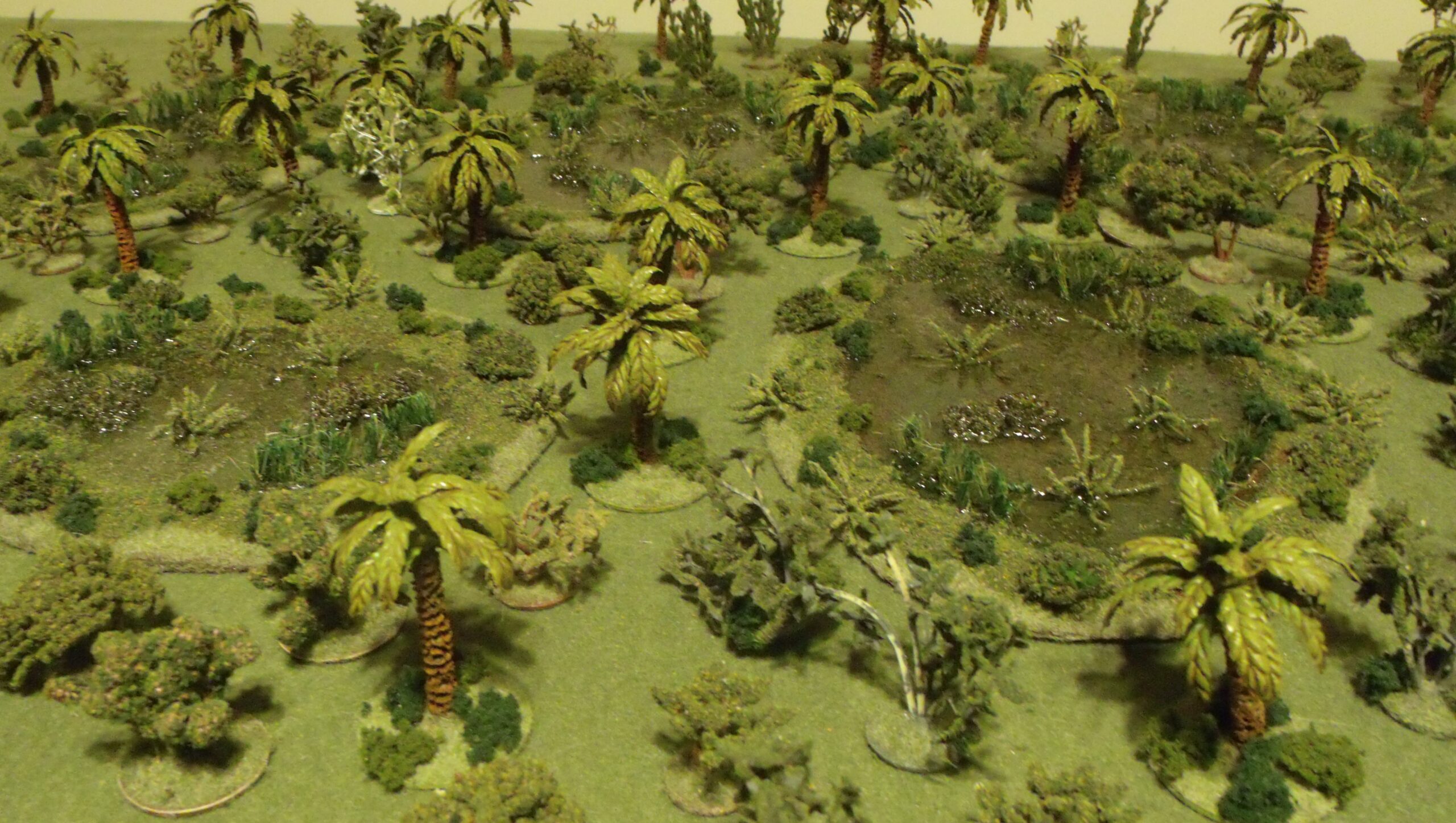
Now that you have a large pile of tree tops, it’s time to start the trunks. Palm trees have a very rough surface texture that doesn’t show up at 15mm scale. Up-close these look a little funny, but from normal table distance they look very convincing. To get them to look like real trees, the texture has to be exaggerated a little.
The trunks were made with pipe cleaners that have been stiffened up with some painted on PVA glue. The one on the far left is unglued (included for comparison purposes). The second was painted with watered-down PVA glue. The third was done using straight, undiluted PVA glue. The fourth trunk was given one coat of glue, allowed to dry, and then given an additional coat. The final trunk was coated with glue and flocked with very fine sawdust.
Palm trees have a fairly wide range of trunk types, so any of these methods produce a usable trunk. It all just depends on what type of palm tree you are trying to represent, and what your personal taste is.
Once the glue has dried on your trunks, it’s time to glue the tops on. Simply place a small amount of glue on the top of the trunk and attach the top fronds. Don’t worry about the ring of glue visible from underneath; it will be fixed in the next step.
Now do the same thing on the underside that you did to make the tops. Adding as many successive rings of palm fronds as you want. A well-manicured and pruned Palm tree will have very few fronds on the underside. A wild or untended one however can have a lot of them in various states of disrepair hanging down underneath. It’s your tree, so have fun and make whatever suits your needs. Most of our trees will be used with our jungle terrain, so they were intentionally made a little scraggly looking.
We kept the painting very simple, using a paint that bonds to plastic for the tops, and normal paint for the trunks. The entire tree was given the same brown wash, with a lot being used on the rough surface of the trunks.






